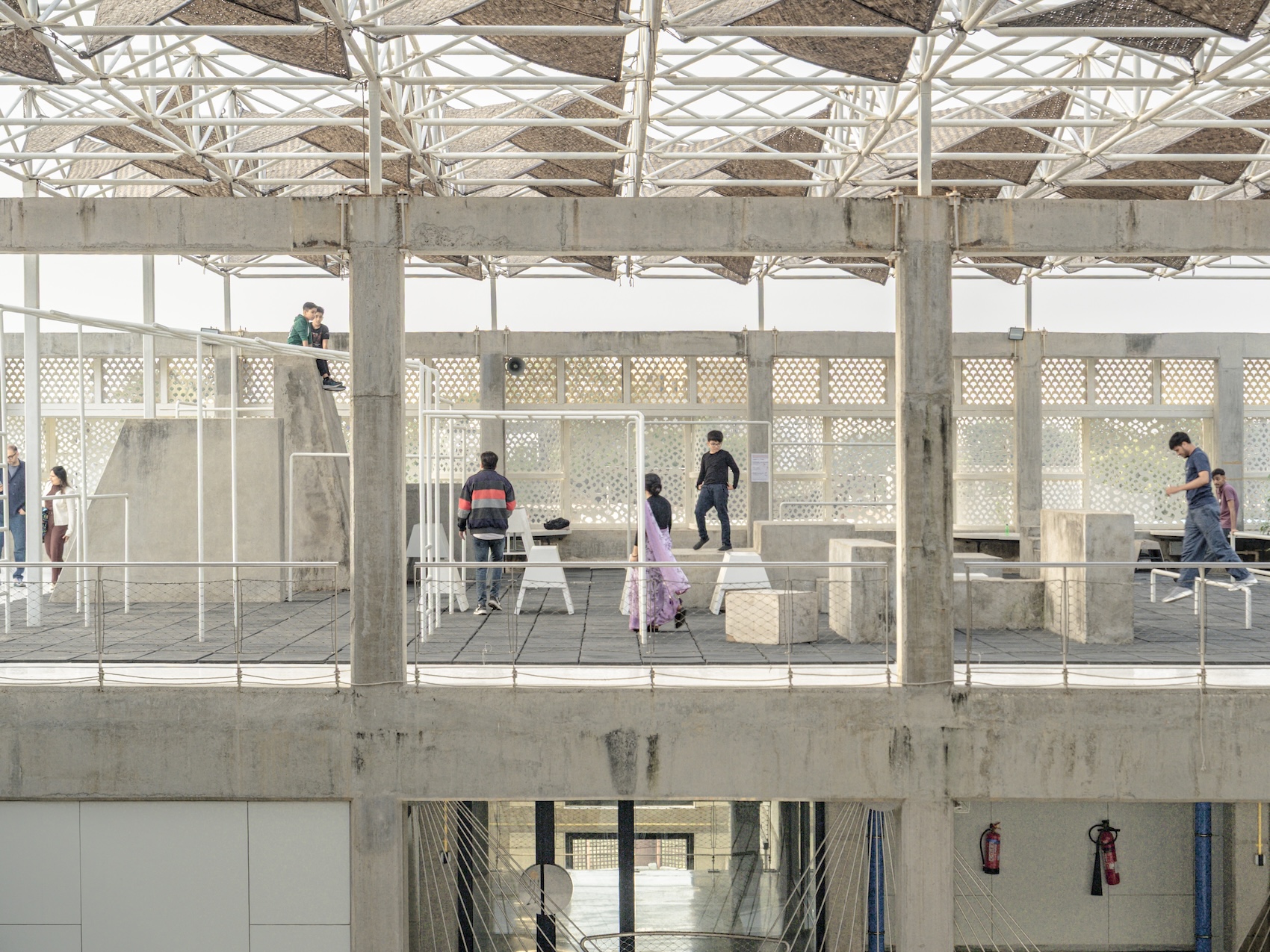Dave Johnstone, Technical Services Manager at Michelmersh, answers readers’ questions on brick workmanship.
Projecting snapped-brick headers articulate the façade of Squire & Partners’ Department Store Studios in London. The project employs a mix of Michelmersh legacy products (photo: Jack Hobhouse).
Why is good brick workmanship important?
Facing brickwork provides the aesthetic façade to buildings and a rainscreen to help prevent the ingress of water. Good workmanship is essential to achieve these twin goals. From mixing bricks from at least three packs as work progresses to ensuring a homogenous and even appearance, and cavities that are kept clear of debris, every aspect is important. This also extends to the correct specification and batching of the mortar, fully filling perpend and bed joints, correct construction of DPC’s et al.
What common problems are associated with poor workmanship?
Brick and/or mortar colour banding. Avoidable staining which is apparent after completion. Water ingress and mould. Cracking and reduced strength and stability.
What steps can specifiers take to ensure good results on site?
In addition to observing all relevant safety and Building Regulations, the BDA guide to Good Site Practice and Workmanship provides authoritative and comprehensive advice covering all aspects, from ordering bricks and reference panels to protecting work as it proceeds. If the guide is referenced in the contract documents and site supervision is put in place to ensure implementation at all stages, there is a good chance of avoiding problems. The BS 8000 series also provides helpful guidance. Correct detailing, particularly on exposed areas, parapets, copings, cills, etc is also imperative. Manufacturers will be happy to discuss detailing with the designer/specifier.
What about brick handling, blending and laying?
Bricks should be handled with care to prevent chipping and breakages. When opening packs, use sharp band-cutting tools, not hammers or bolsters. To achieve a uniform appearance and avoid colour banding or a patchy finish, bricks must be blended from at least three packs, ideally with some overlap between deliveries where possible. Each manufacturer will have specific recommendations for blending bricks. Pre-blending may be available from some manufacturers – the Michelmersh Synthesis range, for example, comprises pre-blended mixes of standard range colours. Before commencing bricklaying, it is advisable to set out a ‘dry’ course of bricks in the required bond pattern. This will aid planning and reduce errors during actual laying. It is important to adopt a consistent jointing technique with regards to timing and finishing. Variations can lead to inconsistencies in visual appearance and performance.
How crucial are wall flashings and what can be done to ensure they are correctly installed?
Wall flashings are essential components in construction. They are designed to prevent water from penetrating the structure at joints and intersections, and are typically installed where a roof meets vertical elements, such as chimneys and other points where water incursion is possible. Properly installed wall flashings are crucial for maintaining the building’s structural integrity and preventing issues, such as mould growth, wood rot, and internal damage.
Flashings should be made of a suitably durable and impermeable material to ensure they are effective. They must also be correctly integrated with other water management systems, such as weather-resistant barriers, and lapped in such a way as to maximise the shedding of water. Their efficacy will be dependent on conscientious installation – preferably by a professional installer who understands the codes and requirements surrounding the issue and is aware of best practice. In the longer term, periodic inspection to identify any damage or deterioration before it becomes catastrophic and expensive to remediate is recommended.
How and why should brickwork be protected during construction?
Brickwork should be protected during construction to avoid saturation, damage from frost, and splash contamination from passing traffic. There is also a risk from strong winds where incomplete, immature and unbraced work may be vulnerable. If brickwork becomes saturated it could lead to the dissolving of minerals salts within the brick, which may then migrate to the surface during drying, manifesting as a variety of stains. Nearly all of these can be removed, however by covering the work, costly remediation can be avoided. Protection is also necessary while the bricks are stored on site for the same reasons.
Immature mortar must also be protected from rain and frost. If there is a threat of rain, walls should be covered using a tarpaulin or similar impermeable sheeting. In the case of threatened frost, walls should be insulated with hessian or similar products to protect the mortar until it cures sufficiently to resist frost damage. Conversely in very hot weather the bricks may be excessively dry and the rapid uptake of moisture from the mortar can cause it to lose plasticity and impair the curing process. Ideally the bricks should be stored in the shade and if very dry, should be lightly sprayed with clean water to help control heat gain and reduce suction. Newly built masonry should be protected with suitable materials, such as hessian or sheeting, to prevent overly rapid drying out.
For further information, please visit the Michelmersh website.














